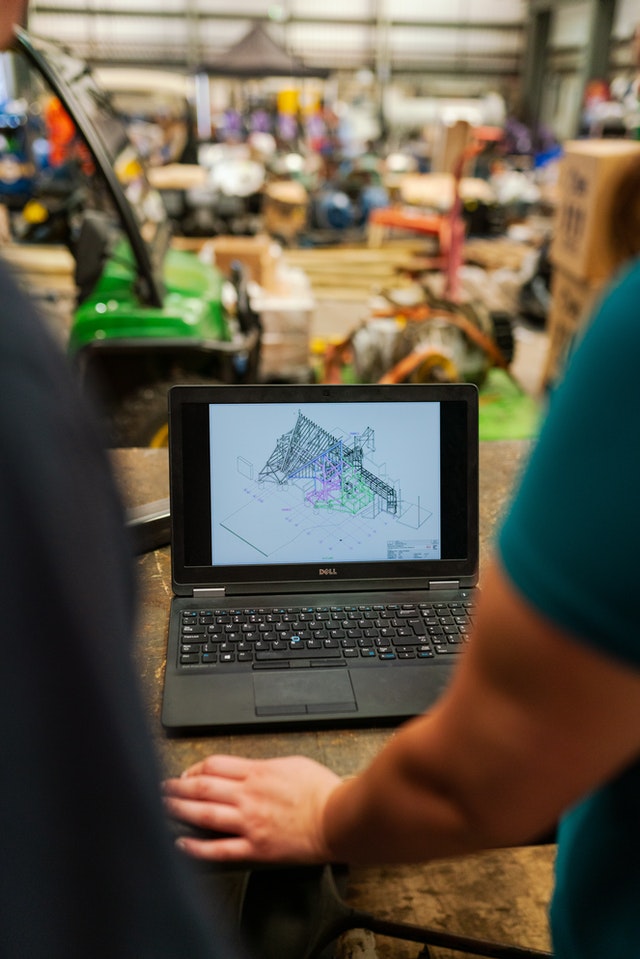The way we make things in manufacturing is fundamentally changing, thanks in no small part to Industry 4.0. Similar to the disruptions felt in printing and photography over the last decade as digital presses took over for offset and DSLRs exploded onto the scene, today’s manufacturing plant is experiencing a crisis of opportunity as exciting new options are made available by machine learning, digital twins, blockchain, and additive manufacturing. This article will focus on how additive processes, otherwise known as 3D printing, can benefit companies and their customers while also contributing to a cleaner, more sustainable future.
Traditional manufacturing relies on expensive, labor-intensive processes like injection molding that also require significant lead time and typically needs longer production runs. That, in turn, can lead to longer inventory cycles. Unfortunately, long inventory cycles can mean tied-up capital.
Meanwhile, 3D printing is adaptable, faster, and can be less expensive than traditional manufacturing processes. Not only does this mean better overall cash flow, the added flexibility can help small companies compete with larger manufacturers.
Less Waste
Additive manufacturing removes the need for tooling. Instead, parts are created using metal powders that can be shipped to site as raw materials. This creates a more efficient supply chain.
Additionally, since parts are printed on an as-needed basis, inventory can be kept at lower levels and replenished on an as needed basis. And since 3D printing has significantly less waste than traditional processes and uses fewer raw material, there are significant cost and environmental benefits. Depending on the type of additive manufacturing, waste can be reduced by as much as fifty percent.
Finally, since the manufacture of parts is now done on-site, the environmental impact of transporting materials from site to site is significantly reduced, adding to cost savings.
Assembly Consolidation
Additive manufacturing also allows for assembly consolidation. This is the ability to combine several parts into a single multi-functional assembly. Complicated parts can be manufactured in this way. NASA has even used this technology to create a one-piece thrust chamber assembly (TCA) designed for liquid rocket engines that eliminates the potential for seal failures like the one that caused the Space Shuttle Challenger tragedy.
Not only can consolidated assembly improve part design and reliability, as seen in the above example, it also can result in reduced part weights and more efficient raw material use. This, in turn, reduces transport costs and the corresponding CO2 emissions.
Circular Manufacturing, Infinitely Reusable
Some 3D metal parts are designed in such a way that makes it easy to reformat or to break units back down when they’ve reached end of lifetime status. This allows reuse of a significant amount of material as another kind of component through ingenuity rather than changing a component’s physical form through a machining process. An example would be using an empty filament spool and returning it to the manufacturer so they can reuse the product. This kind of refurbishment feeds material back into the usability cycle without wasting much energy whatsoever.
This can be used in conjunction with recycling. Recycling allows materials--3D or otherwise--to turn into the powder material required for the additive manufacturing process. When 3D products are returned for recycling back into powder, this creates a loop where the same original raw material is reused, perhaps several times, with minimal degradation.
Other additive materials are designed to support composting opportunities. This includes manufacturing parts made from PLA (polylactic acid) resin. This resin, which is made from fermented plant sugars, provides excellent build platform adhesion with low shrinkage. The material requires less energy to manufacture than similar petroleum-based plastics. Additionally, PLA is fully biodegradable, which allows products to fully decompose and return back to carbon dioxide, water, and biomass.
New Design Flexibility
3D printing uses generative AI design tools that know where a part should exist and what areas to avoid. Once the computer knows how real life forces will act upon the part it can create flexible designs based upon natural rules rather than upon tooling machine tolerances. The result: lighter parts that use fewer raw materials than conventional designs but perform just as well, and sometimes better.
The end use for many of these parts are in cars, airplanes, or other locations where weight factors into emissions. This is where additive manufacturing shines, as every lightweight 3D part means lower fuel consumption and lower carbon emissions overall.
Conclusion
Two decades ago sustainability was little more than a buzzword. Now, it’s serious business that can translate to improved processes, lowered energy consumption, reduced waste, decreased manufacturing time, and significant cost reductions for everyone.
In short, it makes good business sense.
Additive manufacturing is just one of the technologies helping to make manufacturing more sustainable. Read other blog posts for more information about sustainable manufacturing.
Visit our site to search for quality industrial automation parts from Reliance Electric, GE, Fuji, Horner, and others.

